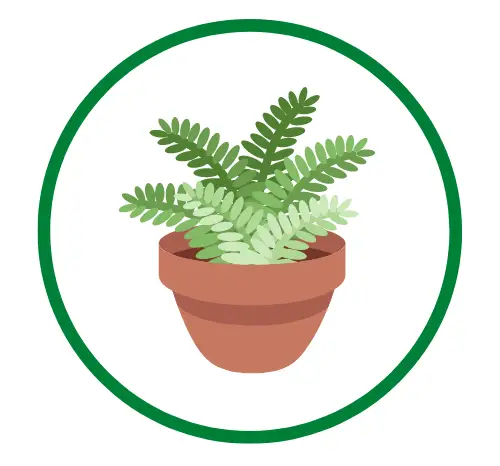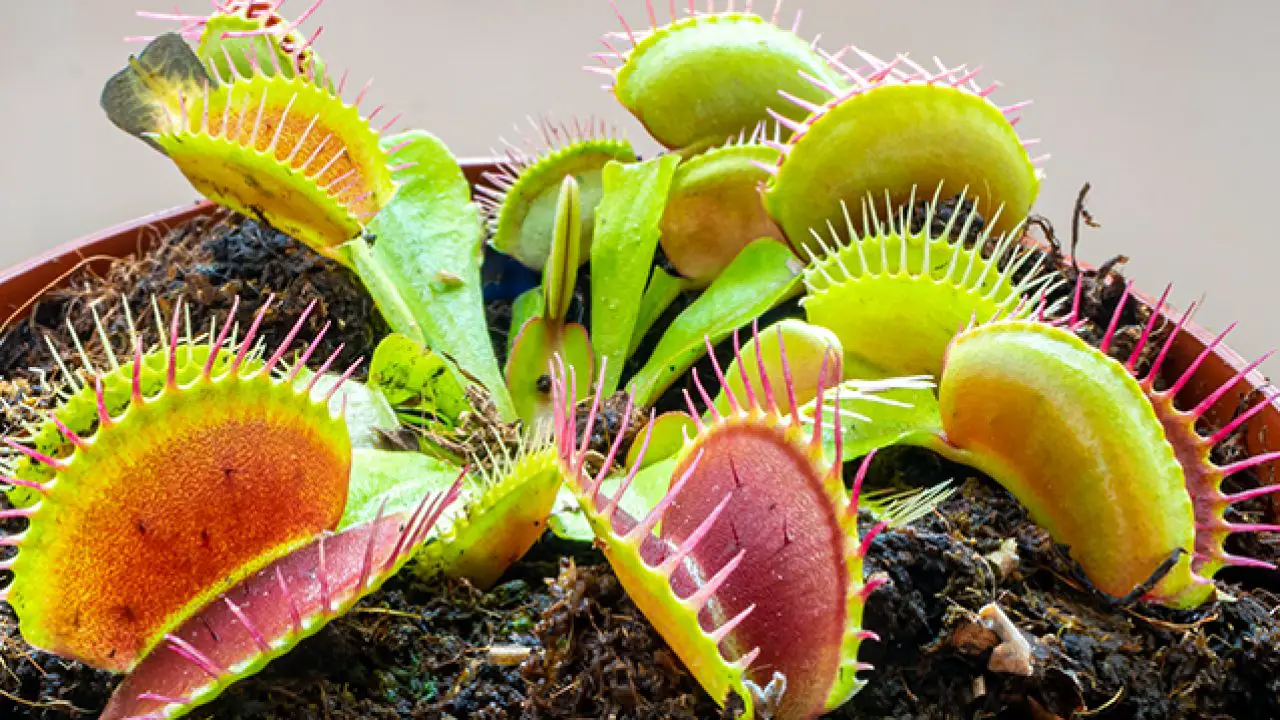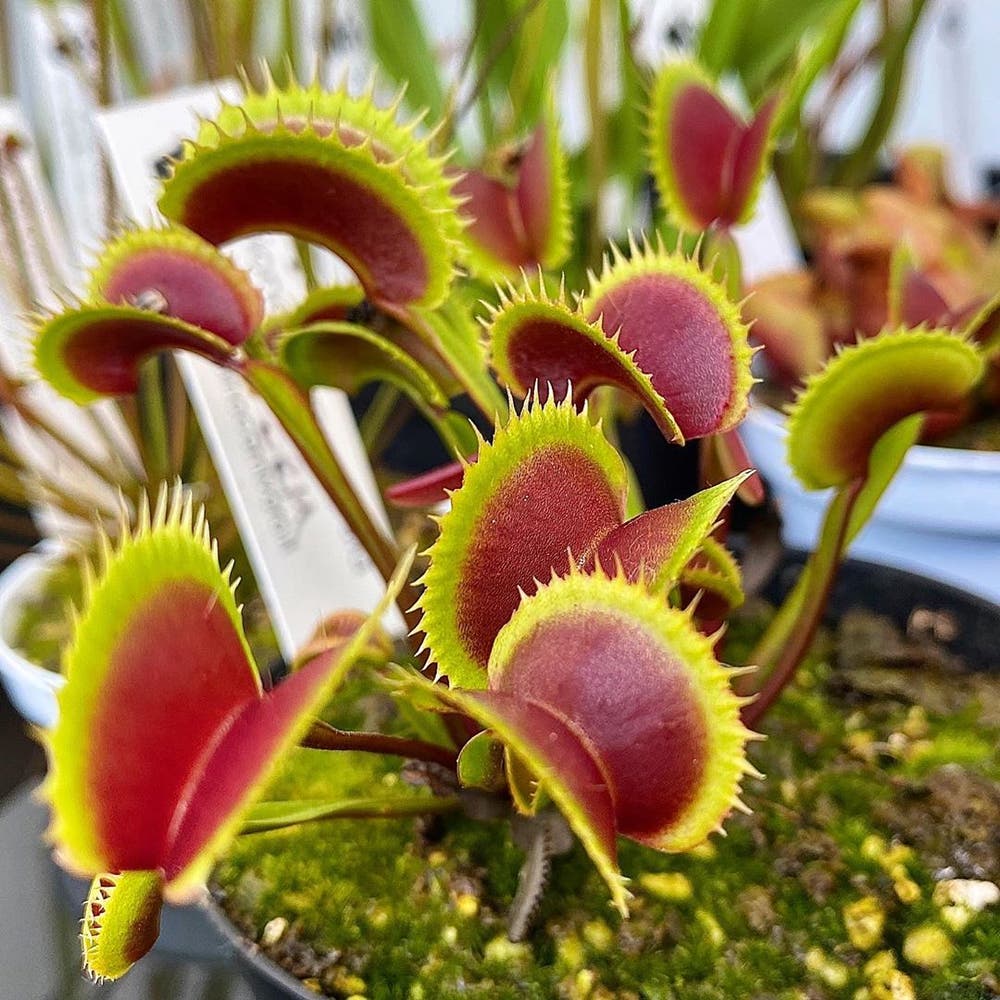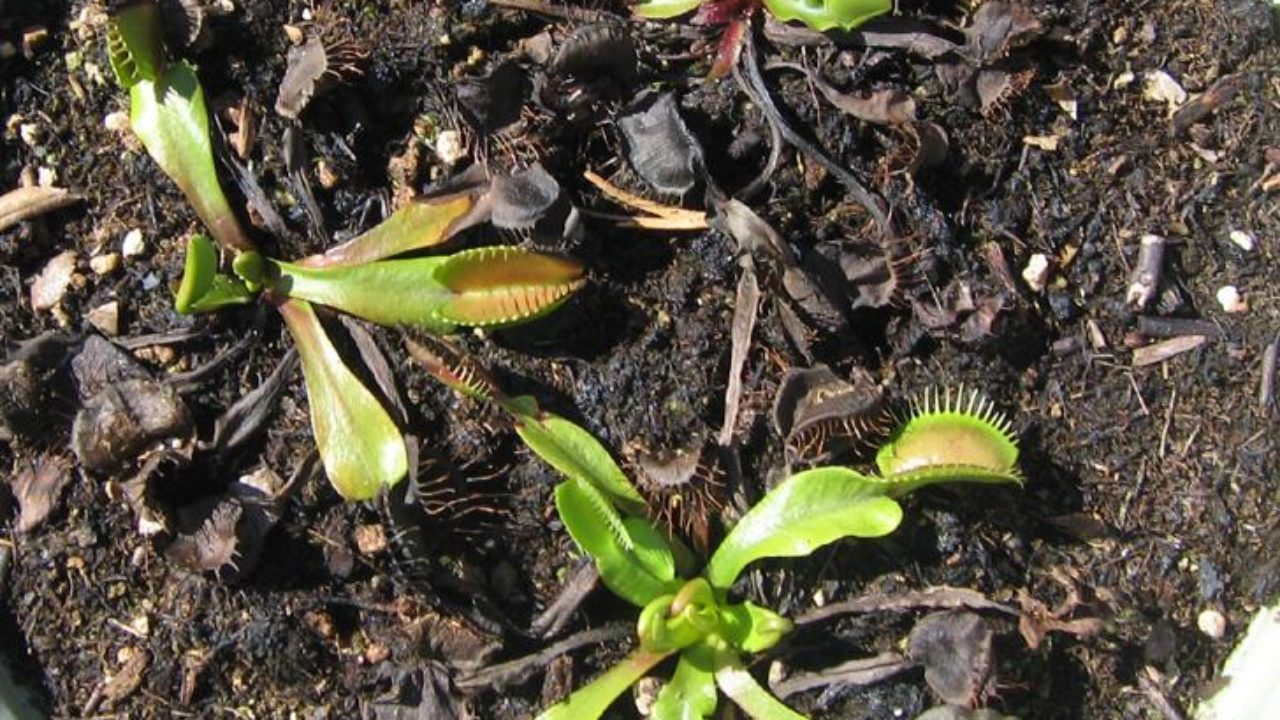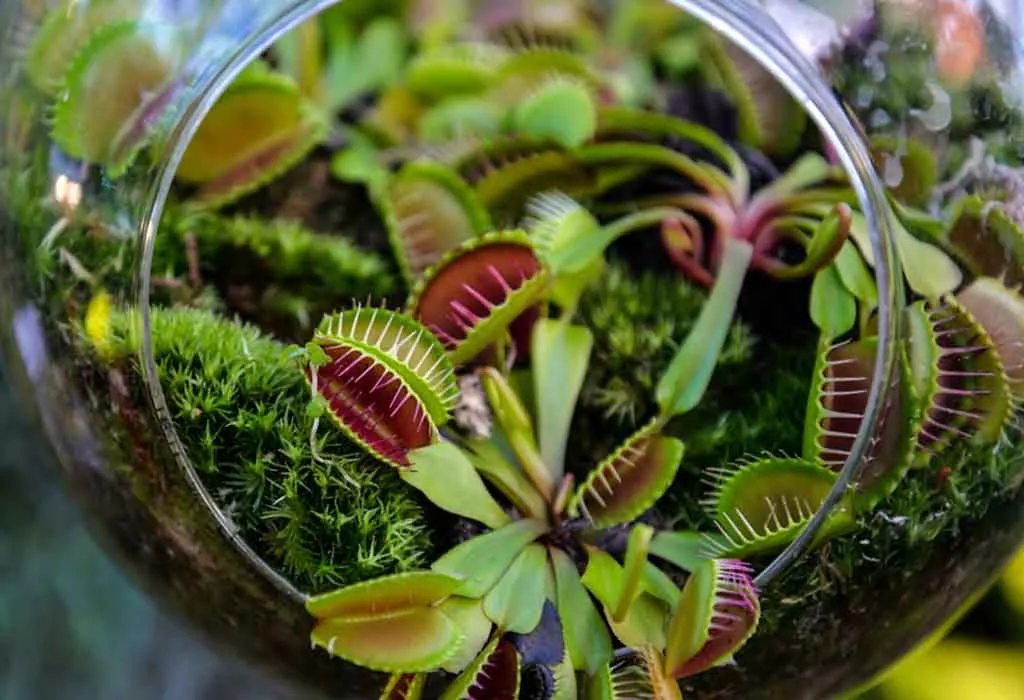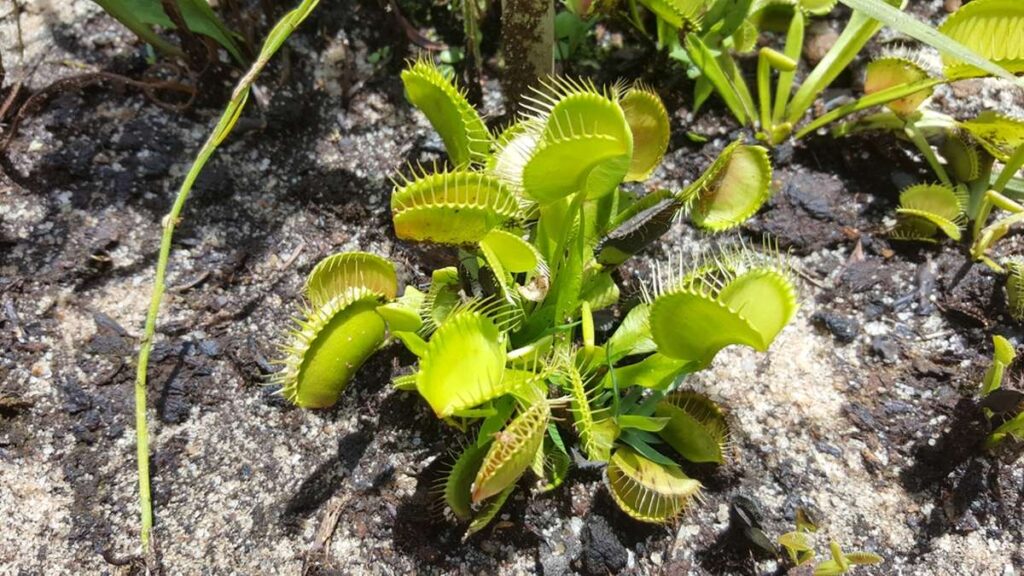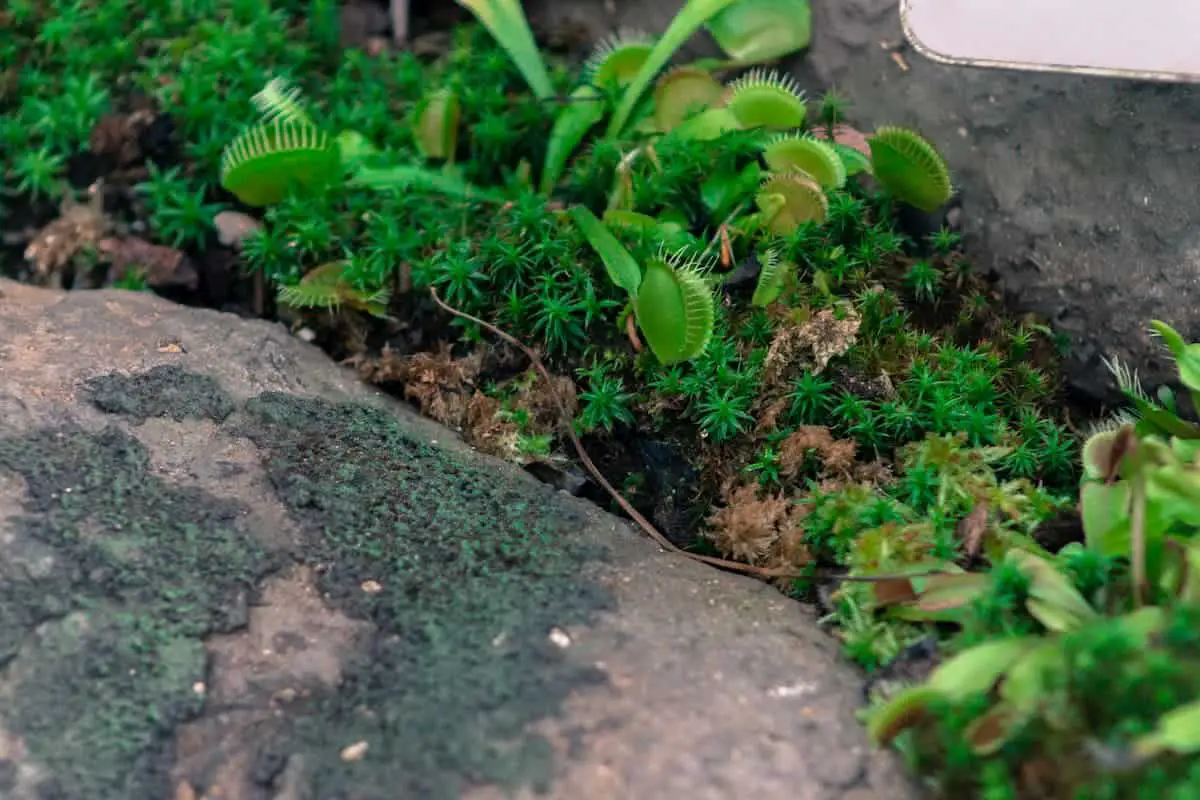How long do venus fly traps live?
A delicate perennial plant that blooms for several years in a row is the Venus flytrap. The Venus flytrap can live up to twenty years, sometimes even longer, both in captivity and in the wild. The plant’s exact life expectancy has not yet been determined. It is unknown whether this plant is the original or spawn of the original, despite some people’s claims that they can live forever.
The Venus Flytrap has been trapped with numbered life spans. Only a few openings and closings are possible from each before it perishes and falls from the plant. The lifespan of the plant itself is unaffected by the limited lifespan of each trap. One venus flytrap plant produces a continuous cycle of trap growth and trap death.
It requires a little bit more of a deeper dive to discover how long venus flytraps live. Learn more about their lifespans and how to prolong the life of your Venus flytrap by reading the information below.
Care information for Venus fly traps
- Zones 6a through 10a are suitable for the Venus Fly Trap.
- They can tolerate light shade but prefer direct sunlight.
- The soil must always be damp, occasionally wet, and frequently flooded.
- When the traps are partially in the sun, the interior won’t be as colorful.
- During the winter, Venus fly trap plants lose their leaves and go dormant.
- Outside plants only reach heights and widths of 6 to 12 inches and 6 to 8 inches, respectively.
- They favor acidic sand or sandy loam.
- Naturally, the Venus fly trap grows in nutrient-deficient soil.
- If you give Venus flytraps a few things, growing venus flytraps indoors is not difficult.
- They are native only to North and South Carolina.
How Can a Venus Fly Trap and Other Carnivorous Plants Be Grown Indoors?
Repotting a healthy fly trap is the first step in taking care of it. A saucer and 4-5 inch pot with drainage holes are necessary for these carnivorous plants. Invest in a tall pot because Venus fly traps have long roots.
The Best Planting Blend for Caring for Venus Fly Traps
Instead of potting soil, the Venus Fly Trap grows best in sphagnum moss mixed with sand or a few pieces of orchid bark. While the moss quickly drains, the acidic pieces of orchid bark hold onto moisture for the plant.
You can also mix one part perlite and one part peat moss. This mixture is sufficiently acidic for the plant thanks to the peat moss. Before placing the potting medium in the pot, thoroughly wet it.
Create a small nest in the middle of the potting medium. Insert the Venus Fly Trap into the nest, then surround it with potting soil. Venus fly traps require well-drained soil devoid of nutrients and minerals.
The Ideal Planting Mix for the Care of Venus Fly Traps
Sphagnum moss mixed with sand or a few pieces of orchid bark, rather than potting soil, is the best medium for the Venus fly trap. While the moss quickly drains, the acidic pieces of orchid bark keep the plant’s moisture in place.
The ratio of peat moss to perlite is also one part to one part. It is sufficiently acidic for the plant because of the peat moss. Prior to inserting the potting medium into the pot, thoroughly wet it.
Make a small nest in the middle of the potting medium. In the nest, set the Venus Fly Trap, and then surround it with potting soil. Soil devoid of nutrients and minerals with good drainage is required for Venus fly traps.
How should a Venus fly trap be watered?
A Venus Fly Trap should never be watered from above. These plants may become susceptible to leaf disease if they receive their water from above.
A Venus Fly Trap should have about an inch of water in its saucer when being watered. Some of the water will be absorbed by the moss and bark and made available to the plant. Keep the plant damp but not drenched.
In extremely pure water, Venus flytraps can grow. Tap water won’t be good for them. Use rainwater or distilled water. Not the water, but their prey provides them with the nutrients they require.
The Optimal Light Levels for Caring for Venus FlyTraps
Venus flytraps require bright, filtered light. When they receive at least 6 hours of sunlight each day, they perform better and have more vibrant colors. Although the colors in the trap are not as vibrant, they can tolerate partial shade and only 2 to 6 hours of direct sunlight.
A full spectrum light positioned about 6 inches above the plants will help Venus flytraps grow. All the light spectrums produced by the sun are present in full-spectrum light.
Thermodynamics and Humidity
It’s likely that the Venus flytrap will be at ease if you are if the temperature. It needs summertime temperatures of 70-95F (21-32C) and wintertime lows of 40F (4C). Humidity is closely related to temperature.
The amount of humidity a plant needs increases with temperature. It must be at least 50% humid for the plant. Find a large enough saucer to fit the flytrap and its saucer if your home is dry. Pebbles should be placed in the big saucer.
Pour almost as much water as the pebbles. Place the flytrap in the large saucer, complete with a pot saucer. As water evaporates, a microclimate with high humidity is produced. Don’t forget to fill the pebble saucer with water when it gets low.
Care for Venus Fly Traps in the Winter months
In order to survive, venus flytraps must go through dormancy. The plant will appear dead because its leaves will turn black and drop off. It is only resting, not actually dead. During the winter, keep your Venus flytrap in a dimly lit area that is cool, at or below 40F (4C). A three-month dormancy period is required.
During this time, the plant should be damp but not wet to prevent root rot. It requires some light while dormant. If you use a basement or garage, lightly dust the plant with sulfur to prevent fungus from developing on it. Make sure the plant is regularly inspected to rule out fungus growth.
Fungus usually indicates an excessive amount of humidity. Manual mold removal, repotting, or exposure to bright light can all be used to treat the plant and restore its moisture balance.
After the flytrap has been dormant for 3–4 months, gradually warm it up and expose it to more light. It will become damaged if you expose it right away to heat and sunlight.
Does a terrarium have to be used for Venus flytraps?
In a terrarium or aquarium, venus fly traps grow are frequently attempted. Plants typically die as a result of this because the temperature becomes too high for them. The plant will, at best, barely make it.
The terrarium’s top is left off to maintain a low enough temperature for the carnivorous plants, and the glass walls keep the humidity that the plants require inside.
Feeding Venus Fly Traps
Your flytrap will become ill if you overfeed it. Likewise, raw meat. Many people will catch flying insects, mealworms, flies, or gnats using a bug trap. Flies, crickets, slugs , spiders, mealworms, and caterpillars are among its favorites. The size of the food you give your flytrap shouldn’t be more than one-third of the trap.
In order for the plant to close in on its prey, it must be alive. The Venus flytrap doesn’t require fertilization. All the nutrients it requires come from insects. Just one or two live insects should be fed to your flytrap each month.
How often should a Venus flytrap plant be potted?
Every one to two years, Venus flytraps should be replanted to avoid fungus and rotting problems. The plant’s needs are no longer met by the growing medium as it deteriorates. The flytrap will require a new, larger pot if it has significantly grown.
You can reuse the pot you already have if it hasn’t expanded much by simply replacing the old medium with fresh potting soil. As will be covered below, repotting is an excellent opportunity to divide the plant.
Propagation
Similar to popcorn, you can’t just have one venus flytrap. Ethical propagating means using flytraps that have never lived in the wild. Tissue cultures are frequently used to grow plants for commercial purposes. That calls for specialized tools and information. The rest of us can obtain new plants in three different ways.
Seed
The Venus flytrap plant will begin to bloom when it is mature, which usually takes two years. You will get black fruits with seeds if you let the flowers stay on the plant. Before harvesting the seeds, allow them to dry out.
The seeds must be started in a peat and sand mixture. To keep the humidity inside, keep the mixture damp and cover it with a clear bag or plastic wrap. The Venus flytrap takes a while to germinate, so don’t hold your breath. Remove the plastic after the seeds have sprouted. Before transplanting the tiny Venus flytraps, they should be given a year to grow.
Cutting
A mature Venus flytrap leaf cutting can be used to start a new plant. The best time to do this is in the early summer when the leaves are in good growth. Take one of the rhizome’s leaves off.
It should be placed in a moist peat/sand mixture with a bag covering it. Keep the leaf in some shade until the roots form. Take off the covering bag. Introduce the plant to the light and humidity it will be residing in gradually. To get a mature plant from your cutting, it will take two years.
Division
Rhizomes, which resemble bulbs, are the source of Venus flytrap growth. When they reach maturity, which occurs at around 2 years of age, they begin to release side shoots. These are the new plants.
Take the plant out of the pot and divide it. Remove the roots and some of the side shoots. Plant these in individual containers. Put the mother plant back in its container. Replace the old potting medium with fresh material.
If the plant is healthy, you can add the used potting soil to your compost pile. The ideal time to divide Venus flytraps is in the early spring or late winter.
Do Insects Have an Impact on the Lifespan of Venus Flytraps?
The quantity of insects a venus flytrap manages to capture can also affect how long it survives. In general, bacteria and fungi must be kept away from Venus Flytraps. This is crucial for their long life and healthy development.
The Venus flytrap occasionally manages to capture an insect that is larger than its trap. If the trap closes, a portion of it hangs outside while the remaining portion is embedded inside the trap.
This may expose the trap to fungi and bacteria that thrive on the insect’s outer layer of skin. If the situation persists, the trap may eventually rot and fall off due to fungal growth.
Do Insects Affect How Long A Venus Flytrap Lives?
The quantity of insects a venus flytrap manages to capture is another element that can affect its lifespan. Venus flytraps must generally be kept free of any bacteria and fungi. For their healthy development and long lives, this is crucial.
A Venus flytrap may occasionally catch an insect that is bigger than its trap. A portion of it hangs outside if the trap closes, while the other portion is embedded inside the trap. As a result, the trap may become contaminated with bacteria and fungi that are present on the insect’s exoskeleton. If the situation worsens, the fungi may rot the trap until it eventually falls off.
Other fungi species may also have an impact on the plant. As a result, it is wise to periodically check your plant for fungi. Before the plant is harmed, you might want to clean up any that you notice.
Use a medium-sized insect in relation to the trap’s size if you are feeding the plant yourself. Make an effort to keep the insect’s size to no more than one-third the size of the trap. Before leaving it for the Venus Flytrap to close, squeeze it and move it around its hair a few times.
This will guarantee that the trap closes and that the insect is completely contained inside of it. To release the enzymes that will break down the insect, the trap needs a secondary trigger.
Can a Venus flytrap survive without bugs?
A Venus flytrap can survive without bugs, but it will be slow-growing and weak. A bug twice a month will help it have all the nutrients it needs to grow big and strong.
Can a Venus flytrap hurt a person?
No, they cannot hurt a person. The biggest trap is only around two inches long and is not strong enough to keep you from pulling away. You can hurt the Venus flytrap by triggering it to close, though. Closing takes a lot of energy that the plant needs to put toward growing. The traps can only close a few times before the leaf dies, so false alarms can kill that leaf.
To Sum It Up
The Venus Flytrap will live in the wild for roughly 20 years, according to what we’ve seen so far. It can also live as long in domestic settings if properly cared for. Just keep in mind that how well you care for your venus flytrap will determine how long it lives.
You can keep your venus flytrap alive for a very long time by being aware of its ideal growing conditions and particular requirements!
Generally speaking, it’s crucial to ensure that the Flytrap has conditions that include moist soil and lots of sunlight during the summer. It is most likely to go dormant during the winter. During this time, you might want to move it away from the sun.
Although growing venus flytraps are not particularly difficult, you do need to unlearn some of the conventional planting principles you have always followed. What is the lifespan of a venus flytrap? If you take the necessary precautions to properly care for these amazing little bug eaters, probably for a very long time!
Visit the website of the International Carnivorous Plant Society for more details if you’re interested in venus flytrap conservation.
